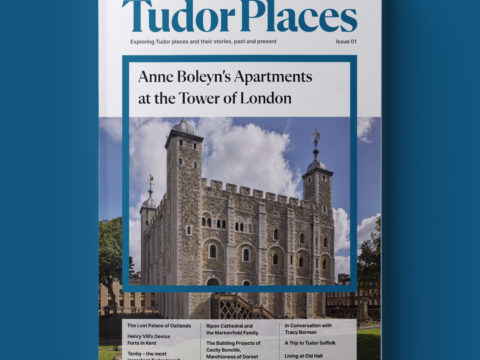Margaret Douglas: Life Story
Chapter 19 : The Tower
Margaret was lodged in an upper room, in the Lord Lieutenant’s Lodgings, adjacent to the Bell Tower. She had two women and three men servants to attend to her wants and her room was furnished appropriately to her rank. Her younger son, Charles, who was eight, was taken into the household of the Archbishop of York, but not long after returned to his home at Settrington. Temple Newsam and other estates were sequestered – that is, their rents diverted to the Crown, even though they were not formally forfeited.
Margaret continued her interminable letters to Cecil, and also found means to communicate with the French and Spanish Ambassadors, which incensed Elizabeth when she heard of it.
Before long, news reached Elizabeth that Mary and Darnley were married. Darnley, in probably the last circumspect action of his life, forebore attending the nuptial Mass – indicating that he would be sympathetic to the Protestants in Scotland.
Mary and Darnley, now entitled King of Scots, although not invested with the Crown Matrimonial as her first husband had been, requested Elizabeth to release Margaret, promising they had no intention of interfering in England, other than wishing her to have an Act of Parliament passed, investing the succession in them and their heirs, or failing heirs, Margaret’s other descendants. In return, they would promise not to change the religion of the country.
Elizabeth, requested by the Kings of France and Spain, as well as Queen Mary, to show mercy to Margaret, refused to sanction her release, but allowed her to be well attended and comfortable in captivity.
Meanwhile, all was not well in the new royal marriage. Darnley was a spoilt, arrogant fool. Mary refused to allow him complete equality with her, and she was also tired of Lennox, who was seeking vengeance on his old enemies. The only thing for which Darnley had proved useful, was his conjugal duty – the Queen was pregnant within a few months of their marriage.
Margaret, presumably, was thrilled. She was also sent a loving letter from her husband, in which he addressed her as his ‘sweet Madge’ and told her how much he missed her. Unfortunately, she never received it, as their servant, Fowler, was captured, and the letter confiscated. Fowler was sentenced to death, but released on Queen Mary’s request. Her pleas for Margaret, however, were refused.
In Scotland, Mary and Darnley’s relationship was going from bad to worse. Concerned over Mary’s reliance on her secretary, David Rizzio, Darnley and others of the Scottish Lords (amongst whom Margaret’s biographer, Alison Weir includes Lennox, but Darnley’s biographer, Caroline Bingham, does not) plotted his murder.
For the first time, so far as is known, Darnley wrote to Elizabeth, asking her to release his mother, saying she had not been party to his marriage to Mary but this too, fell on deaf ears. It was said that, had Margaret been allowed to travel to Scotland, the problems of Darnley’s behaviour would not have arisen. According to the Spanish Ambassador, da Silva, ‘she is prudent and brave, and the son respects her more than he does his father.’ Perhaps that was the reason for Elizabeth keeping Margaret under lock and key.
Mary and Darnley had patched up their relationship for public consumption after the Rizzio murder, but, once her son was born, Mary had no further use for him, and nor had any of the nobles of Scotland, except his father. Darnley was murdered in February 1567, certainly with the knowledge of many of the Scots lords and the active involvement of some. Mary’s level of complicity, if any, continues to be disputed.
Lady Margaret Douglas
Family Tree



